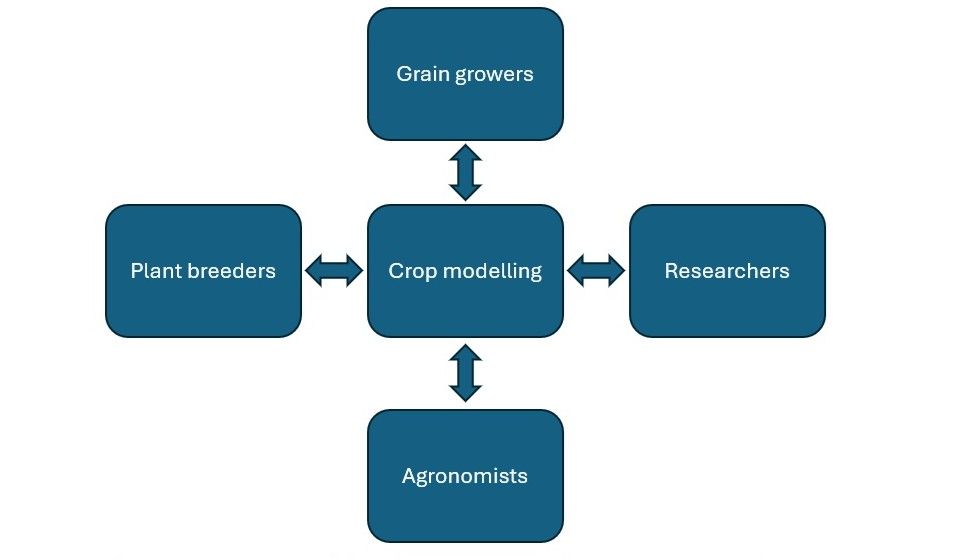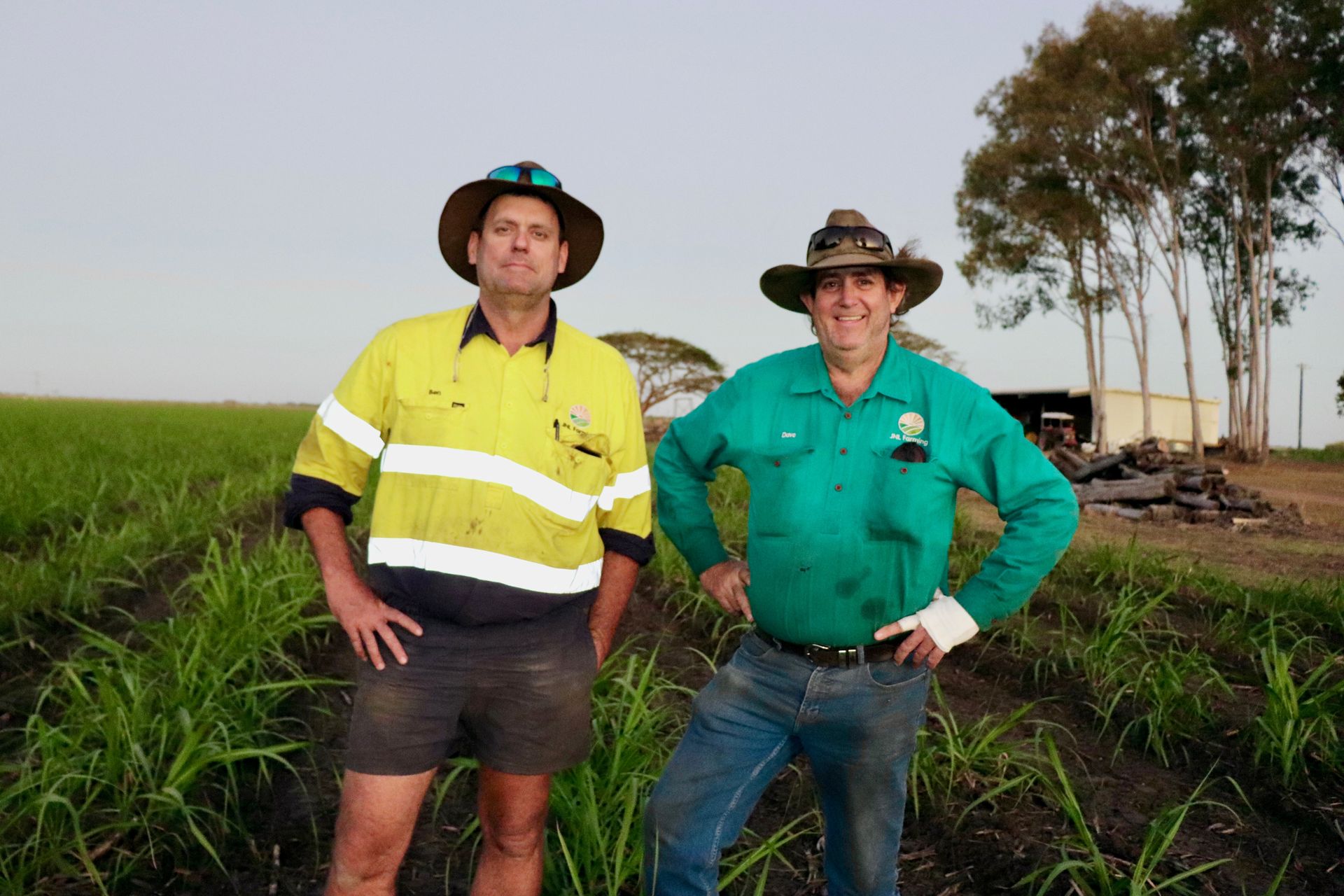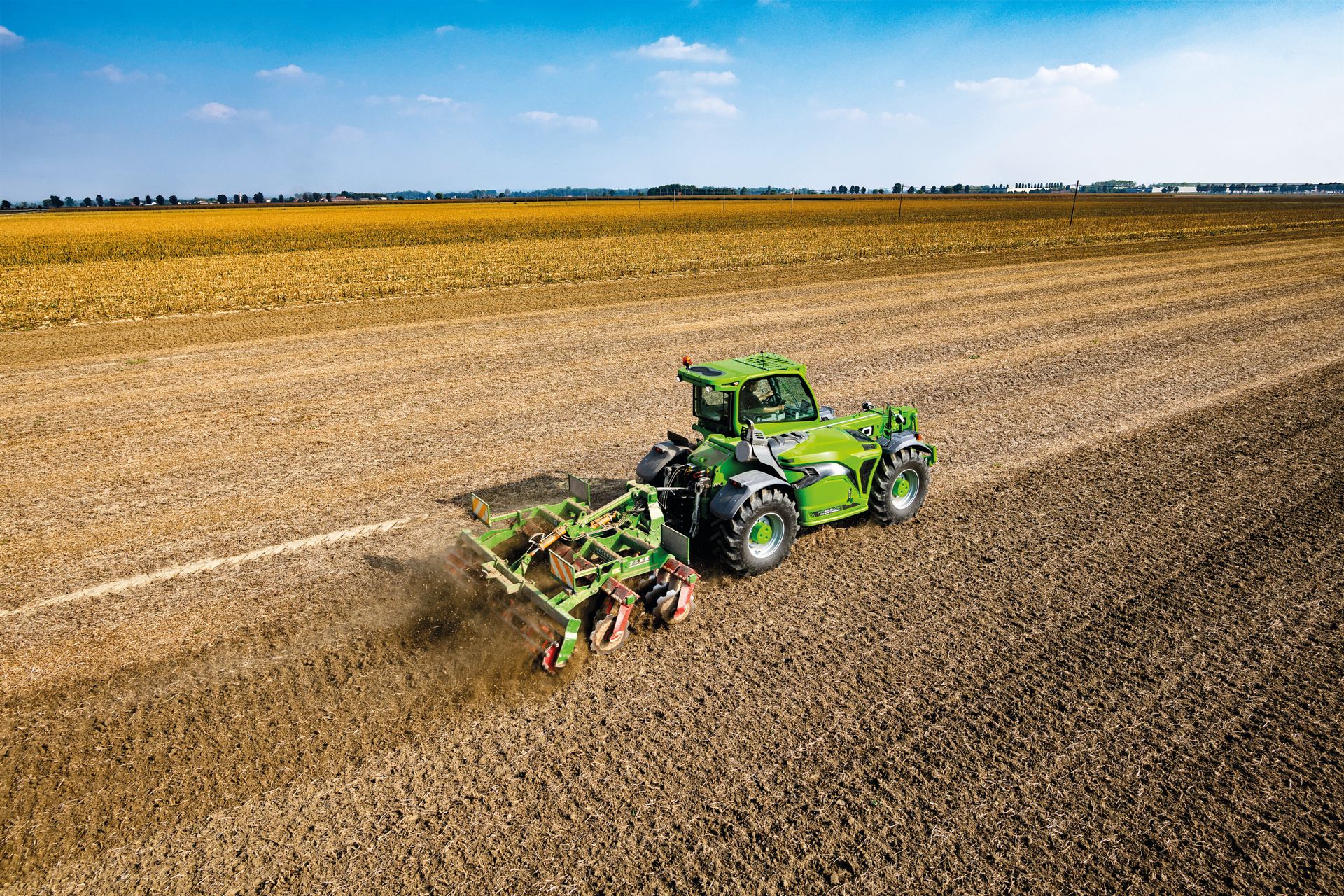Dr Alex Wu is an Amplify Fellow at the Centre for Crop Science for the Queensland Alliance for Agriculture and Food Innovation at The University of Queensland. Alex develops integrative crop ecophysiological knowledge with crop simulation modelling to fast-track smarter decisions in breeding and crop management, supporting the Australian grains industry in achieving greater yield and yield stability.
Crop modelling in crop management and genetic improvement
Computer modelling and simulation of crops can guide decision making by predicting consequences of crop management and genetic trait improvement options.

Dr Alex Wu and Professor Graeme Hammer. Graeme is one of the founders of the globally leading crop modelling platform, Agricultural Production System Simulator (APSIM). Alex has been working as a post-doctoral fellow with Graeme in further developing and applying this technology.
Poor seasonal conditions can wipe off tens of million tonnes of grain production and multi-billion dollar reduction in the total farmgate value each year. Achieving productivity gains and yield stability are thus sustained focal areas in the grains industry.
This requires the synergetic effort of many individuals and entities spanning the grains industry: farmers to grow the most suitable crops based on informed decisions, with the support of breeders, agronomists, and extension experts in providing cultivars and production advice, which are powered by research and development. A platform to integrate these collective efforts will be most valuable.
What is crop modelling?
The Australian grains industry already has extensive experience with existing crop cultivars, management practices, and production environments. This helps growers to achieve good crop outcomes and minimise the odds of bad productivity performance and financial losses. The sustained focus on increasing yield and yield stability will require continual supply of innovations to improve management practices and cultivar attributes.
One of the means to generate innovation is via computer simulation. Via modelling and simulation, it is feasible to look at anticipated yield and production risk ‘a priori’ by examining outcomes over many years and locations. The best way to do this is by using a reliable crop model with relevant long-term climate data and soil data to simulate what might happen when agronomic practices and/or cultivar attributes are changed.
Broadacre crops can be thought of as a complex soil–plant–environment system with many interacting biological (underpinned by the genetics of the plant, G), environmental (E), and crop management practice (M) components. Crop modelling is an exercise that formalises our knowledge in how G × E × M can interact into mathematical equations, connecting knowledge from across the grains industry from grain growers to researchers.
Modelling and simulation provide an avenue to predict consequences of crop management decision options, support their relevance by assessing broad-scale impact , as well as test new cultivar ideas and climatic conditions that may not currently exist. This helps the formulation of robust ideas that can be followed by real-world testing, supporting the delivery of innovations.
Tangible benefits of crop modelling
The concepts related to using crop models as agricultural decision/discussion support has matured over the past many decades and forms a critical part of the grains industry research and development.
Crop science research and modelling supported by the grains industry has enabled the development of advanced computer modelling capability (Hammer et al., 2010). This capability has been used with long-term sequences of climatic data to test probabilistic estimates of yield for a range of decision options, such as planting time, antecedent soil moisture status, cultivar maturity, and moisture conserving agronomic practices like single- and double-skip row systems (Muchow et al., 1994). It has also provided avenues to test G × E × M options for likely future climates (Hammer et al., 2020).
This capability has also been utilised for plant breeding. In addressing the stagnation in the improvement of crop yield, a major Australian government investment into crop modelling enabled researchers and plant breeders to evaluate the value of manipulating plant genetics on photosynthesis, increasing the efficiency at which crop plants convert CO2 into biomass and yield (Wu et al., 2019).
These sorghum crop modelling examples show the ability of modelling in generating broad-scale assessment as an effective means to support robust discussion with decision-makers.
Better outcomes for the grains industry
As the grains industry looks for avenues to improve productivity and profitability, investment into crop science and modelling and engaging with experts and tools for decision/discussion support can help accelerate the discovery and delivery of innovative strategies.
Crop modelling has significantly increased the quality of research and development outputs by integrating knowledge and efforts between decision-making individuals and entities across the wider grains industry from growers, plant breeders, advisors, agronomists, plant/crop scientists experts.
The concept of engaging modelling as a supportive tool extends beyond the provided sorghum example, benefiting various Australian crops including other cereals (e.g., wheat: Chenu et al., 2017; Hunt et al., 2019), legumes, horticulture and viticulture crops.
Maintaining and growing the fruitful interactions across the agricultural industry supported by modelling research and experts will help ensure Australia’s agriculture improvement efforts remain robust and relevant for addressing new challenges.

Some of the entities with close connections to crop modelling efforts. The output of each decision-maker can be enhanced with a two-way connection with others. Crop modelling plays a key role in facilitating information exchange and decision/discussion support.
















